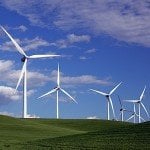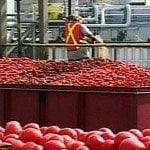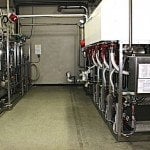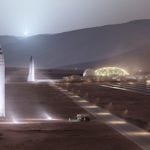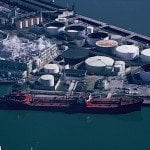With increasingly “congested skies”, is ammonia the jet fuel of the future? What are the other “eco-friendly options, commercially viable for aviation? In this feature, we’ll examine the most promising options, including ammonia, a promising candidate for jet-fuel of the future.
Unfortunately, aviation is a major emissions contributor. The hunt for “clean” aviation fuels is on.

The heavy carbon footprint of aviation
With flights becoming cheaper and growing demand from an ever-expanding global middle class that wants to travel and see the world, the aviation industry is booming. But this growth comes at a cost.
The aerospace industry accounts for around 2% of global greenhouse gas emissions, and its share is expected to grow as the number of passengers flown each year continues to rise.
In the last 40 years, the number of passengers using air travel has grown tenfold. In 2010, the aviation industry carried 2.4 billion passengers and shipped 40 million tonnes of cargo, and estimates from IATA are that this could rise to 16 billion passengers and 400 million tonnes of cargo by 2050. [1]
If nothing changes, this growth will have a devastating effect on the planet.
The problem is that planes use fossil fuels, and burning these releases greenhouse gases into the atmosphere. The main gas emitted by aircraft is carbon dioxide (CO2), which contributes to global warming. Other emissions from planes include water vapor, nitrogen oxide (NOx), sulfur dioxide (SO2), and particulates. Nitrogen oxides (NOx) are a damaging greenhouse gas contributing to ozone formation and smog.
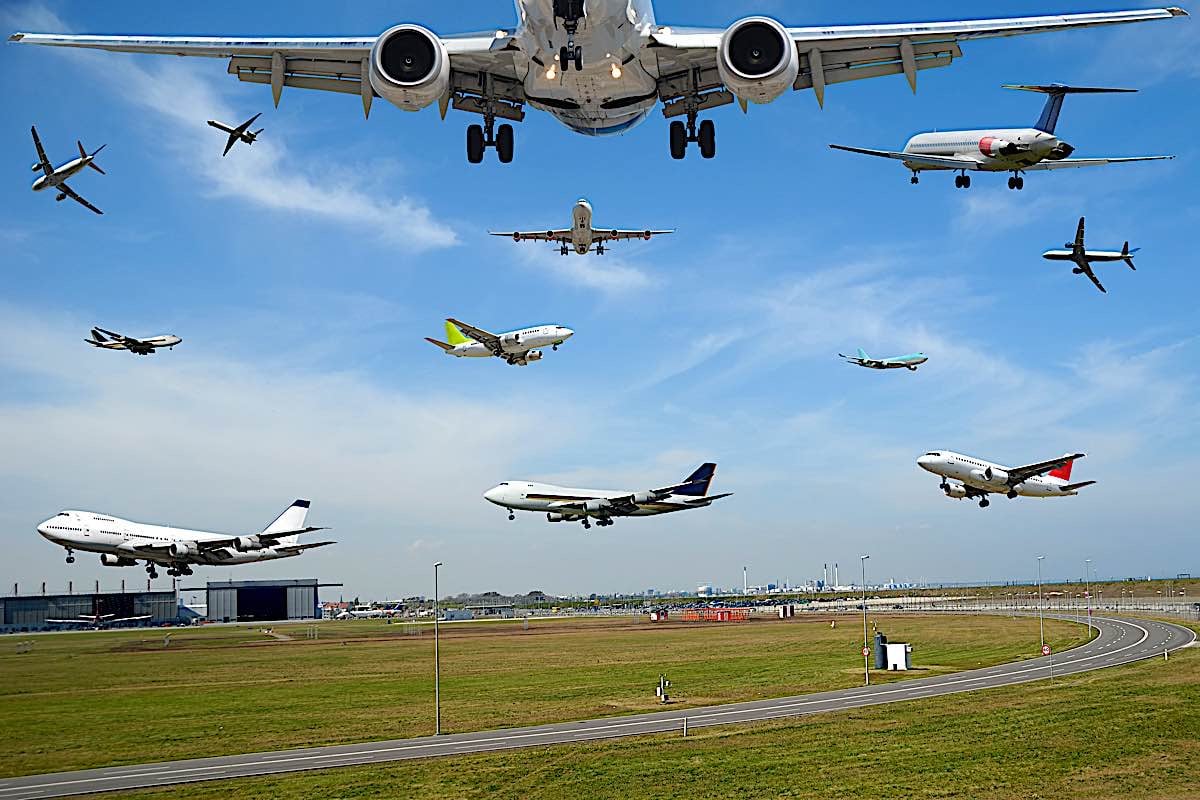
The aviation industry has recognized the need to take action, as this level of emissions is not sustainable in the long term.
If we are to reduce the environmental impact of flying, we need to find a way to fly more sustainably.
And that means finding a better fuel.
Alternatives for more eco-friendly flights
Over the last few years, with the increase in concern over climate change and the investment in research into renewable energy sources, there has been a lot of focus on finding more sustainable aviation fuels. In the rest of this feature, are some of the most promising options.
Biofuels
The most commonly talked about alternative to fossil fuels for aviation is biofuel. Biofuels are made from organic matter, such as plants or waste products. They can be used in conventional aircraft engines without any modification and potentially reduce carbon emissions by up to 80%.
The aviation industry has been using biofuels on a small scale for many years. Several airports, such as Bergen, Oslo, Los Angeles, Stockholm, and Brisbane, supply planes using a 50/50 blend of biofuel and fossil fuel.
The main problem with biofuels is that they are not yet available in the large quantities needed to power the world’s aircraft. And more importantly, producing them can have its own environmental impacts.
The biofuel itself is carbon neutral because the carbon dioxide emitted when it burns is offset by the carbon dioxide absorbed by the plants used to make it.
However, growing and processing crops can release other greenhouse gases, such as methane and nitrous oxide, which can cancel out biofuel benefits. There are also concerns that using land to grow crops for biofuels could lead to deforestation and habitat loss.
So, while biofuels have the potential to be a more sustainable aviation fuel, there are still some issues that need to be addressed before they can be widely used.
Electric planes
Electric planes are a very new technology, and there are only a handful of prototypes in existence. But they can potentially be a game-changer for sustainable aviation if the technology evolves quickly.
Electric planes are powered by batteries or fuel cells, meaning they don’t produce emissions. They are also much quieter than conventional aircraft, so they would reduce noise pollution.
The main challenge with electric planes is that they are not yet able to fly for long distances or carry many passengers. This is because the batteries are very heavy and take up a lot of space. This means that today’s prototypes for electric planes can only carry 2-9 passengers.
But as battery technology improves, it is possible that electric planes will become a more viable option for airlines. [2]
Hydrogen-powered planes
Another promising alternative fuel for aviation is hydrogen.
Hydrogen planes are powered by fuel cells, which use a reaction between hydrogen and oxygen to create electricity. This reaction doesn’t produce emissions, so hydrogen planes would have zero carbon emissions.
Hydrogen is also a very light gas, so it could potentially be used to power larger aircraft. Hydrogen fuel cells have a superior energy density over batteries, so they can theoretically fly for longer distances.
The main challenge with hydrogen planes is that we lack the infrastructure to produce and store the hydrogen.
Hydrogen gas is very difficult to compress, so it needs to be stored at high pressure or in liquid form. This means there would need to be a significant infrastructure investment to redesign hydrogen planes completely.
Also, there is currently no infrastructure for refueling them. And producing hydrogen also has environmental impacts, as it requires a lot of energy today, mainly supplied by fossil fuels, although the production of green hydrogen using renewable energy is growing fast.
With many alternative sources of fuel for aviation but no clear leader so far, ammonia could be the aviation fuel that finally takes off.
Ammonia as jet fuel
Ammonia has been used as fuel for decades, but it was never widely adopted due to its high cost.
However, Reaction Engines and Britain’s Science and Technology Facilities Council (STFC) may have solved the problem. [2]
In a recent concept study they released, they used a new propulsion system that works following these steps:
- The ammonia is stored in the plane in liquid form, chilled and pressurized.
- The engine’s heat warms up the ammonia as it travels to a chemical reactor.
- A catalyst then breaks some of the ammonia down into hydrogen.
- The engine burns the ammonia-hydrogen mixture and produces hydrogen, nitrogen, and water vapor as exhaust.
This system is very efficient and doesn’t produce any soot or particulates, a significant health concern in aviation.
But whereas ammonia itself doesn’t produce emissions, the question is if the process of producing it is as eco-friendly as we’d like or if it’s just going to present the same challenges as biofuel.
Ammonia production
Ammonia is one of the most widely produced chemicals in the world. It’s used in everything from cleaning products to fertilizers. There are ammonia-producing facilities worldwide, and the process has been refined over many years.
Ammonia is a chemical compound made of one nitrogen atom and three hydrogen atoms, NH3. It is a light, colorless gas that can be liquefied easily.
The inputs for producing ammonia are nitrogen (from the air) and hydrogen (from natural gas or water). The nitrogen and hydrogen are combined using a catalyst, usually iron, under high temperatures and pressures.
We produce most ammonia using the Haber-Bosch process, invented over 100 years ago, and using natural gas (methane) and air. The methane is reacted with nitrogen to create ammonia. This process is very energy intensive, requiring high temperatures (over 500 degrees Celsius) and pressures (up to 200 atmospheres).
By using a fossil fuel like natural gas, the emissions from producing ammonia are high. In fact, ammonia production is responsible for around 1.8% of global CO2 emissions. [3]
Looking for a more sustainable way to produce ammonia, some companies are turning to renewable energy sources like solar and wind power. In theory, this could make the production of ammonia completely carbon-neutral.
The secret to producing more environmentally friendly ammonia lies in using renewable hydrogen, also known as green hydrogen.
Green hydrogen is produced from water using renewable electricity from solar or wind power. This is done using electrolysis, which splits water molecules (H2O) into hydrogen and oxygen gas.
The oxygen is released into the atmosphere, and the hydrogen is collected and can be used to create ammonia.
If the electricity used to power the electrolysis process comes from renewable sources, then the resulting green hydrogen can be used to make carbon-neutral ammonia.
This is a promising solution for making aviation more sustainable, as it would allow airlines to reduce their emissions without making major infrastructure changes.
While this technology is not viable today, it is a sign of the progress we are making in developing alternative fuels for aviation. And the best part about ammonia as fuel is that today’s aircraft could be adapted to use it, meaning that the aviation industry wouldn’t have to start from scratch redesigning all planes.
With suitable investment and development, ammonia-fueled planes could be available in the not-so-distant future. And with the right policies in place, we could see a considerable reduction in emissions from this sector.
Sources
[1]: https://www.iata.org/contentassets/bccae1c5a24e43759607a5fd8f44770b/vision-2050.pdf
[2]: https://oilprice.com/Alternative-Energy/Biofuels/Ammonia-A-Jet-Fuel-For-The-Future.html
[3]: https://royalsociety.org/topics-policy/projects/low-carbon-energy-programme/green-ammonia/#:~:text=However%2C%20the%20process%20of%20making,is%20from%20the%20SMR%20process.

